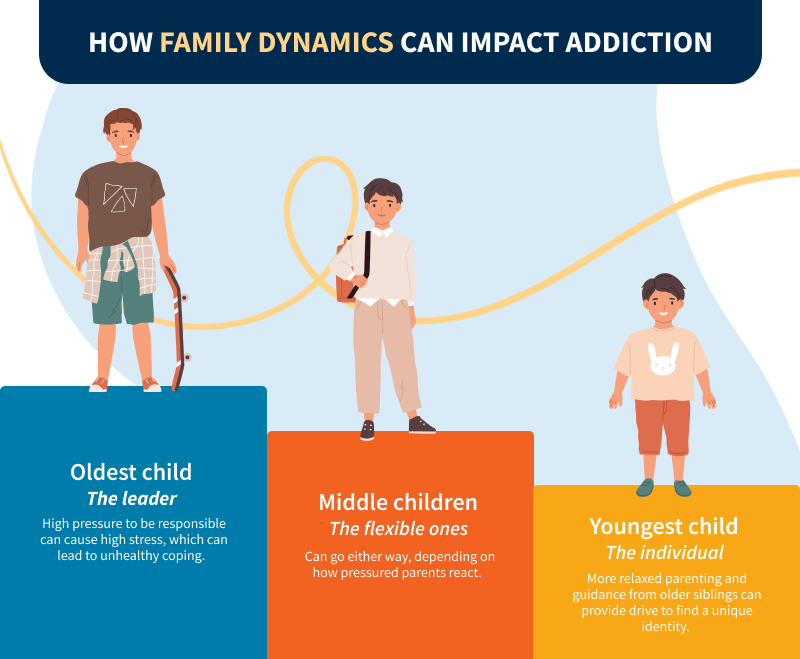Family dynamics play a pivotal role in shaping your teen’s behavior, emotions, and mental health. These dynamics can provide valuable insights into the root cause of various issues that individuals, especially teenagers, may face. This is where family systems theory comes into play.
What is the family systems theory?
Dr. Murray Bowen developed the family systems theory between the late 1940s and early 1950s. It’s a theory that views the family as an emotional unit. Dr. Bowen’s theory suggests that individuals cannot be understood in isolation from one another but rather as a part of their family system. The behaviors of family members are interconnected and interdependent, significantly influencing each other.
Family systems theory proposes that an individual’s behavior is shaped by the larger network of relationships and interactions within the family. So, changes in one member’s behavior can have far-reaching impacts on the entire family system.
The 8 concepts of the family systems theory
1. Differentiation of self
Someone’s ability to maintain their individuality while still being emotionally connected with others. People who are differentiated can manage their emotional reactions thoughtfully and think clearly when they’re stressed. Someone who has a hard time differentiating themselves might rely on other people accepting them. This can cause anxiety and dysfunction in relationships.
2. Triangles
Three-person emotional systems can be called “triangles.” Triangles stabilize relationships when people are stressed but often leave one person out. Rather than ever resolving the stress or tension, it just shifts, which can lead to emotional and behavioral issues.
3. Family projection
Parents can project worry or anxiety onto their children, even if there is nothing to worry about. In turn, children can become stressed or anxious and be more sensitive in their relationships with others. They may have more needs for attention and approval, similar to “people pleasers.”
4. Multigenerational transmission
Differentiation can be passed down, though subtly, from one generation to the next. As children grow up, they can continue—knowingly or unknowingly—patterns that they learned from their parents. This can reinforce positive or negative behaviors in emotion regulation and even relationship seeking.
5. Emotional cutoff
Sometimes, family members resolve conflict by cutting themselves off from the person they were having conflict with. Even though it might seem like a quicker fix, it can damage the relationship in the long term. They may then become dependent on others (even outside the family) to try and fill the same role.
6. Sibling position
What position children are born into might indicate some traits they’ll develop. Older siblings might be more likely to be leaders while youngest children tend to be better followers. There is no “good” or “bad” sibling position, but they could affect how someone processes emotions and bonds with others.
7. The nuclear family
This setting is a good way to picture four typical family interactions that happen during stress:
- External conflict between two spouses
- External conflict from one spouse and accommodation by the other
- Anxieties projected from a parent onto their child(ren)
- Isolation/emotional distancing from others in the family
8. Societal-emotional process
The theory can be scaled up to societal levels, too. It suggests that raising children during periods of societal regression, when more people are driven by relieving anxiety than making progress, might be tougher than during times of progression. Bowen suggests that rather than trying to “fix” the younger generation, parents (and others) can focus on themselves first.
Putting it into practice: Family systems therapy
Family systems therapy is a form of talk therapy that is based on the family systems theory and model. It aims to improve communication, resolve conflicts, and promote healthy functioning within the family system.
During family systems sessions, therapists work with the entire family to address problematic behaviors and patterns of interaction. The goal is to help families identify maladaptive behaviors, understand their underlying causes, and develop healthier ways of relating to each other.
Benefits for teens and parents
Family systems therapy can have numerous benefits for both teenagers and parents.
Teens
For teens, it can:
- Improve communication skills
- Build self-esteem and confidence
- Provide tools to manage emotions
- Develop healthy coping mechanisms
Family systems therapy is often utilized when teenagers are struggling with behavioral issues, such as substance abuse, eating disorders, or mental health conditions. Addressing underlying family dynamics and promoting healthy communication and coping mechanisms can help teens overcome these challenges.
Parents
For parents, family systems therapy can help:
- Better understand their child’s behavior
- Strengthen the parent-child relationship
- Improve parenting skills and strategies
- Enhance overall family functioning
This therapy can also benefit parents on an individual level by helping them address any unresolved issues from their own upbringing that may be impacting their parenting.
How Family First uses family systems theory
We believe in a holistic approach to helping teenagers improve their mental health and relationships with others. That’s why we incorporate family systems theory into our evidence-based treatment programs.
Our therapists are trained in the family systems model and use it to guide our family therapy sessions. We work closely with both teens and parents to address any underlying issues within the family system and promote healthy communication and relationships.
If you’re struggling to connect with your teenager or are concerned about their behavior, don’t hesitate to call us at 888.904.5947 or connect with Family First online to get started.


